#sebastiani theatre
Text
How Does Barbie and an ancient Mesopotamian Goddess have a connection with “the demonic?”
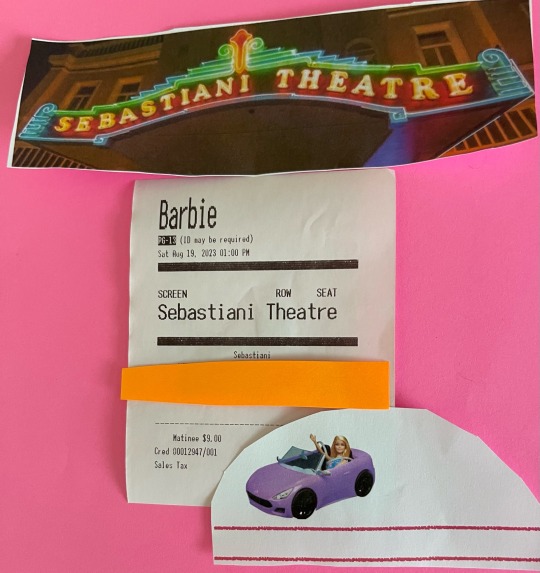
“Barbie” the 2023 movie written & directed by Greta Gerwig had its matinee debut in Sonoma this weekend.
And, for all the anticipation the reason why this reporter saw it was because of the harsh criticism the movie received by a religious conservative.
And this particular religious conservative wasn’t Christian-ministry evangelist Ivan Tuttle, claiming that the film is full of “demonic influences.”
This particular critic is an American Messianic Jewish rabbi and author, Jonathan Cahn. He holds the opinion as expressed on his YouTube channel, that “Barbie” the movie represents a “turning away from marriage and motherhood.”
Somehow the rabbi sees the Barbie character as an embodiment of the ancient Mesopotamian goddess Ishtar. And, he says that Ishtar was the patron goddess of promiscuity and prostitution.
Looking at various sources more closely, Ishtar is a fertility goddess and her mythology is complex. Taking things a bit further, Cahn sees a link between the ancient goddess and Barbie. How he sees this to that extent is baffling.
Because as he alleges, the initial prototype of the Barbie who debuted in 1959 was patterned after a German doll called “Lilli.”
As a fictional character Lilli appeared regularly in a tabloid comic strip. The character of “Lilli” was supposedly a prostitute.
Cahn says Barbie was fashioned after “Lilli.” And because “Lilli” was in prostitution in the comic strip, somehow this is linked with Barbie and then with an ancient fertility goddess.
Forgive me Rabbi Cahn! But I don’t see where and how these dots connected.
Yet despite what Cahn believes is a somewhat dubious origin, the real inspiration behind Barbie was Ruth Handler. She simply wanted to make a doll for her daughter, Barbara.
As historians have noted, children have always had toys, dolls. In America, before Barbie, most dolls for girls were baby dolls. And, Handler noticed that her daughter utilized paper dolls, creating stories and roles for each.
Mentioning this to her husband Elliot and then business associate Harold “Matt” Matson, an idea emerged.
They converted their furniture manufacturing business into a toy making company. Combining the names Elliot with Matt, the corporation Mattel was founded.
Of course, it helped immensely that the furniture they had once made was a combination of plastics of Lucite and plexiglas.
Handler saw the impact a more lifelike and grown up doll-figure would make as it provided a tangible three-dimensional experience. And, it would help give expression to an imagination that could think and dream of many possibilities.
In Barbie a girl could imagine going places, doing things and most of all, envisioning herself being in the world.
Rhea Perlman from the TV series “Cheers” portrays Handler and explains this eloquently in the movie.
Yet Cahn must have missed this as he focuses mostly on the opening scene in the movie as girls smash their baby dolls in favor of having a coveted “Barbie Doll.”
For it’s entertaining quality and affirmation of women, “Barbie” the movie is “uneven” as movie-reviews like the Roger Ebert website have noted.
From a philosophical perspective, this reporter agrees, the movie is “frustratingly uneven.” But that’s because there’s so much to take in.
So many “existential concepts” and “ identity crisis” dilemmas, that it’s hard to follow a clear path of a story-plot.
Culturally, Barbie as “an icon” represents many things. And, just about all of that, both the negative and the positive is expressed in the movie.
Yet amid all the eye-popping color of scene changes and special effects, along with the existential crisis themes, again it’s important to remember that Barbie was made over 60 years ago.
Barbie was initially made simply as a doll for one woman’s daughter. The rest of it over the years, it seems to be is what people project upon this doll.
For Handler, Barbie was there to help her daughter and girls like her back in 1959. She wanted them to use their imagination to see themselves in whatever role or scenario they wished to be in.
Yes, the figure of Barbie is idealized but so are many works and depictions of humans in art form. The world back in 1959 when Barbie was born was much different, more conventional than what is today in the 21st Century.
Our world today in 2023 is very complicated, diverse and some of that is explained or expressed in this fantasy “meets reality,” movie.
I think the rabbi and other fundamentalist religious leaders need to do a bit more research and try to listen to the actual dialog/script of the movie.
To go so far as to allude that this box office hit is “demonic” is way off base. It’s interesting to point out that Cahn is a NY Times best-selling author. His 2011 fiction book “The Harbinger” spent over 100 weeks on the bestseller list. One might question whether Cahn’s criticism of the movie is an effort to sell more of his books as “The Harbinger” is one of seven in a series he has written.
Rabbi Cahn is upset with the “feminist” aspect to the movie, obviously. And, yes! The character of the Ken doll is an “accessory” or prop for Barbie and her adventures.
But so what! How Cahn can compare Ken & Barbie to ancient Mesopotamian deities seems ludicrous and out of place.
The action figure G.I. Joe was created by the toy company Hasbro in 1964 five years after the debut of Barbie. In essence Barbie, Ken, G.I. Joe and others like them are action-figures. To imply or see them as anything other than that is well, childish.
“Barbie” continues at the Sebastiani Theater in Sonoma until August 24 with both afternoon and evening showings. For more information visit the Sebastiani Theater website.
3 notes
·
View notes
Text
Shannon Lay Interview: The Volume Meets the Medium
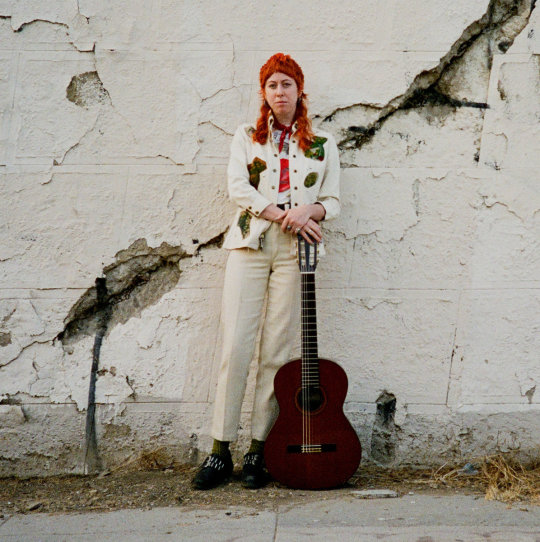
BY JORDAN MAINZER
Upon listening to “Angeles”, the Elliott Smith interpretation that opens Shannon Lay’s first covers album Covers Vol. 1 (Sub Pop), you’re struck by something familiar, yet different: her voice. Whether singing original songs, Karen Dalton on 2019′s August, or Syd Barrett on 2021′s Geist, Lay’s voice has always taken on an expressive whisper. You know--kind of like Elliott Smith. But on “Angeles”, she goes full force, unobscured by the haze of her past material. It’s the first song on the first album released since Lay’s taken voice lessons, taking advantage of a living situation and time in her career when she can sing out loud without bothering a roommate, with the confidence and good habits she’s developed over years of writing and performing.
Covers Vol. 1 is, in many ways, different than your traditional covers album. The artists included on it feel like an extension of Lay’s world, from the gentle caress of Nick Drake or Arthur Russell to the Bay Area scuzz of Ty Segall and OCS. (Lay’s spent a lot of time in Ty Segall’s Freedom Band.) Artists like Sibylle Baier and Jackson C. Frank are newfound loves, whereas Smith, Drake, Segall, and OCS are longtime influences. For an artist who wears her influences loudly and proudly while having still developed a unique artistic voice, a covers album is almost the perfect embodiment of Shannon Lay.
When I spoke again with Lay over the phone a couple months ago as she was about to embark on an opening tour for Whitney, she talked about why she likes not just recording covers, but playing them for an audience. “It’s such a great unifier, especially for an audience that doesn’t know you,” she said. “‘You like this? I like this, too!’” Lay plays Friday at the South Pasadena Masonic Lodge, Saturday at the Sebastiani Theater in Sonoma, and in July at the Permanent Records Roadhouse in L.A. Whether it’s a celebration of the release of Covers Vol. 1, Geist, her whole discography, or music in general, you can be sure to hear her as the messenger of some songs she didn’t necessarily write, embedded in the folk tradition.
Read our conversation below, edited for length and clarity.
Since I Left You: Both times we’ve spoken, you’ve talked about how much you like doing covers. You’ve included covers on your otherwise-original albums. What made you want to do a full covers album?
Shannon Lay: I think I had just amassed enough. I had so many under my belt that I loved playing live over the years, and it felt good to release something indicative of how I’ve been playing live lately, which is solo with this nylon string guitar, stripped-down, campfire style. It seemed appropriate.
SILY: Are there a couple tying threads among the range of artists you cover on here?
SL: I really wanted to be transparent about my influences, considering the fact that people who like my music would probably love these other artists, too. It felt like a nice way to let people in to the way I make music and open them up to the things I like, too. If you like me, you’ll definitely like Nick Drake and Elliott Smith.
SILY: It’s certainly a mix of eras. I was excited to see a couple modern day Bay Area luminaries in Ty Segall and OCS. How did those bands influence you as much as, say, Nick Drake and Sybille Baier?
SL: To have real-world experience with people I revere so much has been amazing. Ty and [OCS’] John [Dwyer] have been so supportive ever since I started playing music. It’s been super cool having them as a source of inspiration and support. I love them as people, but I absolutely love their music, so I had to pay tribute to those two guys. They’ve been so impactful on my life, musically and personally.
SILY: On your past couple records, your singing style seems more whispered and subdued, layered and affected. On here, especially on the Elliott Smith and Jackson C. Frank covers, you’re not obscuring your voice at all, which I found especially interesting on the Elliott Smith track, because that’s his singing style. Can you talk about how you adapted your vocal performance for these covers?
SL: I’ve been learning a lot about my voice. I’ve always loved to sing, but I think I grew up singing in these environments where I was living with someone, or roommates, and I didn’t want to bother anyone. I was always quite shy with my singing. Recently, I’ve had the ability to have my own space and explore what it’s like to go full-voice. Also, the way I’ve been tuning my guitar, which I got from Sybille Baier, is tuned down to C-standard. My voice fits so cozily in that zone. I started taking vocal lessons last year. It just blew the doors open, and I was able to find a much more powerful place to sing from. This record is the first place I’ve recorded that progress. Feeling it, and hearing how it hits the tape, particularly on the “Angeles” cover, was so delicious. I get why people love it: It’s this stunning compression that happens when you get that volume that meets that medium.
It’s been so cool. A lot of times, when you play an instrument or sing, you feel like you max out what you’re able to learn about it. I don’t think that’s true for anything. I feel like you can always learn more about what you love doing. With singing, it’s been really cool to expand the possibilities of it. I also want to sing for the rest of my life, so [it’s about] finding healthy habits and a new love for it. It’s stunning. I love it!
SILY: It’ll be cool to hear how you take this new approach into your original songs.
SL: Totally, especially if you see me live lately. It’s the new ingredient in the mix, which has been really fun in a simplified setting. It really maximizes the potential of how dynamic the vocals can be. It’s a really cool instrument, and it’s built into all of us.
SILY: Can you pinpoint your exact relationships to all of these songs, like when you first heard them or fell in love with them? Are there any that are newer to you?
SL: Sybille Baier is pretty new. I only discovered her in the last 4-5 years. Jackson C. Frank was also a pretty new love. The two of them have a lot in common. There’s a beautiful poetic melancholy to the way they make music, and two people I’d love to create a platform to lift them up on. They’re lesser known within this list of people.
The Jackson C. Frank song, I had never heard a cover done by a woman. I wanted to sing it from a female perspective. I thought it was interesting the way it took shape and became a little bit more wistful. I intentionally cut a verse that talked about giving up and not trying anymore. [laughs] I don’t agree with that. There’s something about heartbreak that propels you forward. It’s not about giving up, it’s about overcoming that moment. I liked bringing a more hopeful perspective to a very sad song.
SILY: The last time we talked, you said you always have a Sybille Baier track in your back pocket to cover at any moment. Why’d you choose this specific song?
SL: I wanted to pick songs that hadn’t been covered very much. [“I Lost Something In The Hills”] has some of my favorite lines I’ve ever heard in music. The whole arc of it feels like a coming-of-age story. Understanding yourself in an accepting light and that you’re kind of a weirdo, and these “strong and strange moods,” as she says. I can highly relate.
SILY: It’s a microcosm for the whole record, a curation of songs as a sort of mixtape, but you just happen to be the one singing.
SL: Yes! I love that.
SILY: “I’m Set Free” is a fun one because everyone says Lou Reed’s voice is deadpan, but your cover sort of reveals the song’s melody.
SL: [laughs] Totally. It’s a trip, man. I love transforming that song. The original has a washy thing about it, and I wanted to bring it down to Earth. The lyrics are so beautiful, and the message is, “I’m leaving the story behind,” having a clear perspective of a situation and it being up to you how to feel about things.
SILY: The Ty Segall cover is from Sleeper, his first “folk” record, but OCS have never gone through that folk phase to the extent Ty has. They’ve always maintained a certain level of noise, and "I Am Slow” specifically has a lot of weird instrumentation. How did you find adopting it to a folk song?
SL: That one was funny. With all the covers I’ve done, it falls into place so naturally, and that one just spilled out one day. I had to check with John on the lyrics because I wasn’t exactly sure what he was saying. [laughs] I got to play a few songs with OCS when they released their last record, which is one of the most stunning pieces of music, and I got to sing that song with Brigid Dawson. Every time I listen to OCS and play that song, I feel like I’m paying tribute to San Francisco. It just boils down the vibe of the [city], like a love note to the Bay Area.

SILY: What’s the story behind the cover art of this record?
SL: I do love a pun, so I wanted me under covers on the cover of the covers record. [laughs] It was a really fun shoot. My partner Kai MacKnight shot it on 16mm and grabbed stills, so it had this stunning texture about it. I was actually laying underneath a picnic table, and he was on top of the picnic table to get the shot. I love how it came out. It’s ethereal and ambiguous.
SILY: The title of this album has “Vol. 1″ in it. Do you have other covers set to record and release?
SL: I don’t, but I wanted to establish this never-ending journey. I really appreciate music and sharing music. I love bringing my perspective to songs. I want Vol. 2 to be all duets. I’m going to amass a bunch of duets for that one and see where it goes from there, and eventually release a sick-ass box set. [laughs]
SILY: Are you working on any original material?
SL: I’ve been sporadically writing ever since I released Geist. I want to figure out what that wants to be. I’ve also been writing with other people. I have a few things on the stove simmering, and I want to see what they turn into. I feel it on the horizon.
SILY: Anything else next for you?
SL: Just enjoying the ride. I’ve been doing ceramics!
SILY: Anything you’ve been listening to, watching, or reading you’ve dug?
SL: I just finished Poker Face, which I absolutely loved. It gives me X-Files vibes, which is such a nice thing to have in modern television.
I’ve just been listening to Elliott Smith for like the last year. I can’t stop. [laughs] And Pavement. A modern artist I’d like to hype is Allegra Krieger. She’s fantastic, an East Coast gal who makes the most incredible folk music you’ve ever heard. Her last album Precious Thing has been on repeat. It brought me to tears the first time I’ve heard it.
SILY: Did you see a Pavement reunion show?
SL: I did. It was in-credible. They gave the people what they wanted.
youtube
#interviews#live picks#shannon lay#sub pop#sid the cat#sebastiani theatre#permanent records roadhouse#covers vol. 1#elliott smith#karen dalton#august#syd barrett#geist#nick drake#arthur russell#ty segall#ocs#freedom band#sibylle baier#jackson c. frank#whitney#south pasadena masonic lodge#john dwyer#lou reed#sleeper#poker face#x-files#pavement#allegra krieger#kai macknight
3 notes
·
View notes
Photo










Sonoma, CA (No. 2)
Sonoma Plaza (Spanish: Plaza de Sonoma) is the central plaza of Sonoma, California. The plaza, the largest in California, was laid out in 1835 by Mariano Guadalupe Vallejo, founder of Sonoma.
This plaza is surrounded by many historical buildings, including the Mission San Francisco Solano, Captain Salvador Vallejo's Casa Grande, the Presidio of Sonoma, the Blue Wing Inn, and the Toscano Hotel. In the middle of the plaza, Sonoma's early 20th-century city hall, at the plaza's center and still in use, was designed and built with four identical sides in order not to offend the merchants on any one side of the plaza. The plaza is a National Historic Landmark and still serves as the town's focal point, hosting many community festivals and drawing tourists all year round. It provides a central tourist attraction. "The Plaza", as it is known, is the site of a huge Fourth of July celebration, with thousands of the town's inhabitants attending the festivities. It is also the location of the Farmer's Market, held every Tuesday in the summer.
This location was where the Bear Flag Revolt took place in 1846, which led to the founding of the short lived Republic of California.
"For many years, the site in Sonoma Plaza where the bear flag originally had been raised went unmarked. Largely through the efforts of the Native Sons of the Golden West, the legislature appropriated $5,000 for a monument to be placed there. The Native Sons of the Golden West raised $500 to prepare the site, put on dedication ceremonies, and to move the huge rock that serves as the pedestal from a mile away."
Source: Wikipedia
#Sonoma#Sebastiani Theatre#architecture#cityscape#USA#Sonoma Plaza#Ledson Hotel#park#tree#flora#California#vacation#nature#landmark#tourist attraction#Sonoma City Hall#wildlife#animal#bird#duck#summer 2022#original photography#West Coast#dusk#moon
5 notes
·
View notes
Text
Mac-Hadyn Opens Kander & Ebb's "Cabaret"
Mac-Hadyn Opens Kander & Ebb’s “Cabaret”
Kander and Ebb’s masterpiece is here. Packed full of smash hit songs, high drama, with plenty of laughs along the way! This fierce musical, set in Berlin, follows the writer Clifford Bradshaw as he enters the decadent and hypnotic world of The Kit Kat Club. There he meets the vivacious headliner Sally Bowles. A romance ensues as the world around them changes dramatically. We are honored to…
View On WordPress
#Angela Karstensen#cabaret#Emily Kron#Erin Kieman#Fred Ebb#Fred Frabotta#John Kander#John Saunders#Liz Gurland#Mac-Haydn#Mac-Haydn Theatre#MHT#Pat Moran#Sebastiani Romagnolo#The Mac-Haydn Theatre
3 notes
·
View notes
Photo
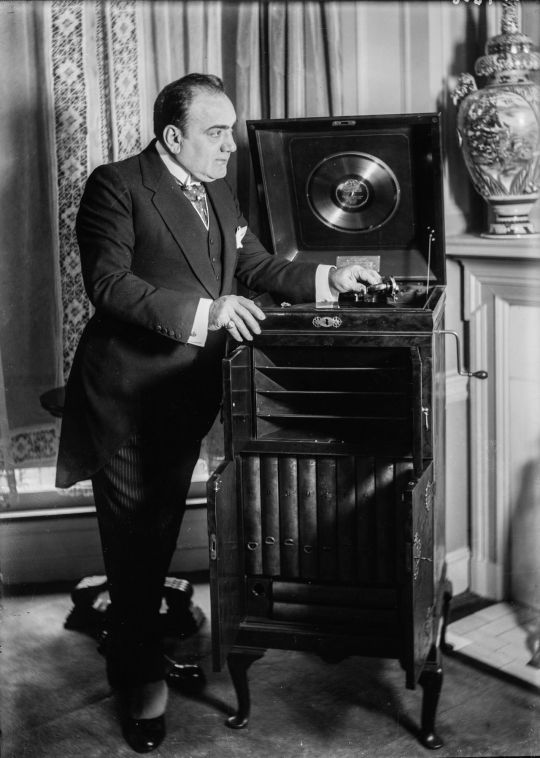
Enrico Caruso was born on February 25, 1873. He was an Italian operatic tenor. He sang to great acclaim at the major opera houses of Europe and the Americas, appearing in a wide variety of roles (74) from the Italian and French repertoires that ranged from the lyric to the dramatic. One of the first major singing talents to be commercially recorded, Caruso made 247 commercially released recordings from 1902 to 1920, which made him an international popular entertainment star.
Caruso's 25-year career, stretching from 1895 to 1920, included 863 appearances at the New York Metropolitan Opera before he died at the age of 48. Thanks in part to his tremendously popular phonograph records, Caruso was one of the most famous personalities of his day, and his fame has endured to the present. He was one of the first examples of a global media celebrity. Beyond records, Caruso's name became familiar to millions through newspapers, books, magazines, and the new media technology of the 20th century: cinema, the telephone and telegraph.
Caruso toured widely both with the Metropolitan Opera touring company and on his own, giving hundreds of performances throughout Europe, and North and South America. He was a client of the noted promoter Edward Bernays, during the latter's tenure as a press agent in the United States. Beverly Sills noted in an interview: "I was able to do it with television and radio and media and all kinds of assists. The popularity that Caruso enjoyed without any of this technological assistance is astonishing."
Caruso biographers Pierre Key, Bruno Zirato and Stanley Jackson attribute Caruso's fame not only to his voice and musicianship but also to a keen business sense and an enthusiastic embrace of commercial sound recording, then in its infancy. Many opera singers of Caruso's time rejected the phonograph (or gramophone) owing to the low fidelity of early discs. Others, including Adelina Patti, Francesco Tamagno and Nellie Melba, exploited the new technology once they became aware of the financial returns that Caruso was reaping from his initial recording sessions.
Caruso made more than 260 extant recordings in America for the Victor Talking Machine Company (later RCA Victor) from 1904 to 1920, and he and his heirs earned millions of dollars in royalties from the retail sales of these records. He was also heard live from the stage of the Metropolitan Opera House in 1910, when he participated in the first public radio broadcast to be transmitted in the United States.
Caruso also appeared in two motion pictures. In 1918, he played a dual role in the American silent film My Cousin for Paramount Pictures. This film included a sequence depicting him on stage performing the aria Vesti la giubba from Leoncavallo's opera Pagliacci. The following year Caruso played a character called Cosimo in another film, The Splendid Romance. Producer Jesse Lasky paid Caruso $100,000 each to appear in these two efforts but My Cousin flopped at the box office, and The Splendid Romance was apparently never released. Brief candid glimpses of Caruso offstage have been preserved in contemporary newsreel footage.
While Caruso sang at such venues as La Scala in Milan, the Royal Opera House, in London, the Mariinsky Theatre in Saint Petersburg, and the Teatro Colón in Buenos Aires, he appeared most often at the Metropolitan Opera in New York City, where he was the leading tenor for 18 consecutive seasons. It was at the Met, in 1910, that he created the role of Dick Johnson in Giacomo Puccini's La fanciulla del West.
Caruso's voice extended up to high D-flat in its prime and grew in power and weight as he grew older. At times, his voice took on a dark, almost baritonal coloration. He sang a broad spectrum of roles, ranging from lyric, to spinto, to dramatic parts, in the Italian and French repertoires. In the German repertoire, Caruso sang only two roles, Assad (in Karl Goldmark's The Queen of Sheba) and Richard Wagner's Lohengrin, both of which he performed in Italian in Buenos Aires in 1899 and 1901, respectively.
Repertoire
Caruso's operatic repertoire consisted primarily of Italian works along with a few roles in French. He also performed two German operas, Wagner's Lohengrin and Goldmark's Die Königin von Saba, singing in Italian, early in his career. Below are the first performances by Caruso, in chronological order, of each of the operas that he undertook on the stage.
World premieres are indicated with **.
L'amico Francesco (Morelli) – Teatro Nuovo, Napoli, 15 March 1895 (debut)**
Faust – Caserta, 28 March 1895
Cavalleria rusticana – Caserta, April 1895
Camoens (Musoni) – Caserta, May 1895
Rigoletto – Napoli, 21 July 1895
La traviata – Napoli, 25 August 1895
Lucia di Lammermoor – Cairo, 30 October 1895
La Gioconda – Cairo, 9 November 1895
Manon Lescaut – Cairo, 15 November 1895
I Capuleti e i Montecchi – Napoli, 7 December 1895
Malia (Francesco Paolo Frontini) – Trapani, 21 March 1896
La sonnambula – Trapani, 25 March 1896
Mariedda (Gianni Bucceri [it]) – Napoli, 23 June 1896
I puritani – Salerno, 10 September 1896
La Favorita – Salerno, 22 November 1896
A San Francisco (Sebastiani) – Salerno, 23 November 1896
Carmen – Salerno, 6 December 1896
Un Dramma in vendemmia (Fornari) – Napoli, 1 February 1897
Celeste (Marengo) – Napoli, 6 March 1897**
Il Profeta Velato (Napolitano) – Salerno, 8 April 1897
La bohème – Livorno, 14 August 1897
La Navarrese – Milano, 3 November 1897
Il Voto (Giordano) – Milano, 10 November 1897**
L'arlesiana – Milano, 27 November 1897**
Pagliacci – Milano, 31 December 1897
La bohème (Leoncavallo) – Genova, 20 January 1898
The Pearl Fishers – Genova, 3 February 1898
Hedda (Leborne) – Milano, 2 April 1898**
Mefistofele – Fiume, 4 March 1898
Sapho (Massenet) – Trento, 3 June (?) 1898
Fedora – Milano, 17 November 1898**
Iris – Buenos Aires, 22 June 1899
La regina di Saba (Goldmark) – Buenos Aires, 4 July 1899
Yupanki (Berutti)– Buenos Aires, 25 July 1899**
Aida – St. Petersburg, 3 January 1900
Un ballo in maschera – St. Petersburg, 11 January 1900
Maria di Rohan – St. Petersburg, 2 March 1900
Manon – Buenos Aires, 28 July 1900
Tosca – Treviso, 23 October 1900
Le maschere (Mascagni) – Milano, 17 January 1901**
L'elisir d'amore – Milano, 17 February 1901
Lohengrin – Buenos Aires, 7 July 1901
Germania – Milano, 11 March 1902**
Don Giovanni – London, 19 July 1902
Adriana Lecouvreur – Milano, 6 November 1902**
Lucrezia Borgia – Lisbon, 10 March 1903
Les Huguenots – New York, 3 February 1905
Martha – New York, 9 February 1906
Madama Butterfly – London, 26 May 1906
L'Africana – New York, 11 January 1907
Andrea Chénier – London, 20 July 1907
Il trovatore – New York, 26 February 1908
Armide – New York, 14 November 1910
La fanciulla del West – New York, 10 December 1910**
Julien – New York, 26 December 1914
Samson et Dalila – New York, 24 November 1916
Lodoletta – Buenos Aires, 29 July 1917
Le prophète – New York, 7 February 1918
L'amore dei tre re – New York, 14 March 1918
La forza del destino – New York, 15 November 1918
La Juive – New York, 22 November 1919
Caruso also had a repertory of more than 500 songs. They ranged from classical compositions to traditional Italian melodies and popular tunes of the day, including a few English-language titles such as George M. Cohan's "Over There", Henry Geehl's "For You Alone" and Arthur Sullivan's "The Lost Chord".
On 16 September 1920, Caruso concluded three days of recording sessions at Victor's Trinity Church studio in Camden, New Jersey. He recorded several discs, including the Domine Deus and Crucifixus from the Petite messe solennelle by Rossini. These recordings were to be his last.
Dorothy Caruso noted that her husband's health began a distinct downward spiral in late 1920 after he returned from a lengthy North American concert tour. In his biography, Enrico Caruso Jr. points to an on-stage injury suffered by Caruso as the possible trigger of his fatal illness. A falling pillar in Samson and Delilah on 3 December had hit him on the back, over the left kidney (and not on the chest as popularly reported). A few days before a performance of Pagliacci at the Met (Pierre Key says it was 4 December, the day after the Samson and Delilah injury) he suffered a chill and developed a cough and a "dull pain in his side". It appeared to be a severe episode of bronchitis. Caruso's physician, Philip Horowitz, who usually treated him for migraine headaches with a kind of primitive TENS unit, diagnosed "intercostal neuralgia" and pronounced him fit to appear on stage, although the pain continued to hinder his voice production and movements.
During a performance of L'elisir d'amore by Donizetti at the Brooklyn Academy of Music on December 11, 1920, he suffered a throat haemorrhage and the performance was canceled at the end of Act 1. Following this incident, a clearly unwell Caruso gave only three more performances at the Met, the final one being as Eléazar in Halévy's La Juive, on 24 December 1920. By Christmas Day, the pain in his side was so excruciating that he was screaming. Dorothy summoned the hotel physician, who gave Caruso some morphine and codeine and called in another doctor, Evan M. Evans. Evans brought in three other doctors and Caruso finally received a correct diagnosis: purulent pleurisy and empyema.
Caruso's health deteriorated further during the new year, lapsing into a coma and nearly dying of heart failure at one point. He experienced episodes of intense pain because of the infection and underwent seven surgical procedures to drain fluid from his chest and lungs. He slowly began to improve and he returned to Naples in May 1921 to recuperate from the most serious of the operations, during which part of a rib had been removed. According to Dorothy Caruso, he seemed to be recovering, but allowed himself to be examined by an unhygienic local doctor, and his condition worsened dramatically after that. The Bastianelli brothers, eminent medical practitioners with a clinic in Rome, recommended that his left kidney be removed. He was on his way to Rome to see them but, while staying overnight in the Vesuvio Hotel in Naples, he took an alarming turn for the worse and was given morphine to help him sleep.
Caruso died at the hotel shortly after 9:00 a.m. local time, on 2 August 1921. He was 48. The Bastianellis attributed the likely cause of death to peritonitis arising from a burst subphrenic abscess. The King of Italy, Victor Emmanuel III, opened the Royal Basilica of the Church of San Francesco di Paola for Caruso's funeral, which was attended by thousands of people. His embalmed body was preserved in a glass sarcophagus at Del Pianto Cemetery in Naples for mourners to view. In 1929, Dorothy Caruso had his remains sealed permanently in an ornate stone tomb.
Daily inspiration. Discover more photos at http://justforbooks.tumblr.com
19 notes
·
View notes
Photo

Harvest Season - BRAVO! http://www.pbs.org/independentlens/films/harvest-season/ #HarvestSeason #SebastianiTheatre #Documentary #Film #Friendship #Community #VineyardWorkers #WineMakers #Wine #Vino #MigrantWorkers #Latinos #ImpactoLatino #ValleyOfTheMoon #NapaValley #SonomaValley #Sonoma #Napa #SonomaValleyLife #WineCountry #LifeStyle #YouBelongHere #California #Travel #ItsABeautifulLife #ThankYou #Joy (at Sebastiani Theatre Foundation) https://www.instagram.com/p/Bv-jpxlHuBx/?utm_source=ig_tumblr_share&igshid=r94tnur7ae7s
#harvestseason#sebastianitheatre#documentary#film#friendship#community#vineyardworkers#winemakers#wine#vino#migrantworkers#latinos#impactolatino#valleyofthemoon#napavalley#sonomavalley#sonoma#napa#sonomavalleylife#winecountry#lifestyle#youbelonghere#california#travel#itsabeautifullife#thankyou#joy
0 notes
Video
This past weekend, the Sonoma International Film Festival featured the fine new film "The Promise". The co-star Angela Sarafyan was a delight in a Q/A with host JD Heyman of People Magazine. Angela was nice enough to stay afterward and lend her grace for this little piece. Make sure your volume is on to get a taste of the film's gorgeous soundtrack, composed by Gabriel Yared. | #angelasarafyan #thepromisefilm #jdheyman #sonomafilmfest #spritzsf @celebritycruises #filmfestival #peoplemagazine #robertredfield #redfieldpictures (at Sebastiani Theatre Foundation)
#redfieldpictures#robertredfield#sonomafilmfest#angelasarafyan#spritzsf#filmfestival#peoplemagazine#thepromisefilm#jdheyman
1 note
·
View note
Text
Mount Eerie and Julie Doiron announce Lost Wisdom pt. 2, share “Love Without Possession”
Artists and critics wax rhapsodic about Phil Elverum, but a deep understanding of his work is only beginning to emerge. His dark, compelling tales continue to mesmerize, and we are indebted to the man who always keeps us on our toes. Elverum, or Mount Eerie, if you will, will release a new album with Julie Doiron in early November.
Lost Wisdom pt. 2 will come out on Elverum’s own P.W. Elverum & Sun label November 8. This is his second record with the ex-Eric’s Trip singer, and while we sometimes say things lightly, this time, we DON’T say this lightly: the first single from the album is ABSOLUTELY GORGEOUS. Speaking about the collaboration, Elverum says,
In a grab for deeper continuity, I called and asked Julie Doiron if she could join me in the recording. She has been my favorite singer since 1993 when I first heard her band Eric’s Trip and subsequently devoted my life to music and art. This 26-year path from teenage obsession to collaborator has made me feel very fortunate. We made another record in 2008 called Lost Wisdom, more flames, more love, more turmoil. Now we get to do some more singing and playing together.
Here’s the video for “Love Without Possession,” and here’s the album pre-order.
Lost Wisdom pt. 2 tracklisting:
01. Belief
02. When I Walk Out of The Museum
03. Enduring the Waves
04. Love Without Possession
05. Real Lost Wisdom
06. Widows
07. Pink Light
8. Belief pt. 2
Mount Eerie tour dates (all shows with Julie Doiron except Oakland):
10.29.19 - Oakland, CA - Fox Theater (with Big Thief)
11.30.19 - Vancouver BC - Christ Church Cathedral
12.03.19 - Seattle, WA - The Neptune
12.04.19 - Portland, OR - Revolution Hall
12.06.19 - Sonoma, CA - Sebastiani Theatre
12.07.19 - Los Angeles, CA - Masonic Temple at Hollywood Forever
12.08.19 - Minneapolis, MN - Cedar Cultural Center
12.09.19 - Chicago, IL - Thalia Hall
12.10.19 - Columbus, OH - Via Vecchia
12.11.19 - Toronto, ON - Great Hall
12.13.19 - Boston, MA - Arts at the Armory
12.14.19 - Brooklyn, NY - St. Ann & the Holy Trinity Church
12.15.19 - Philadelphia, PA - First Unitarian Sanctuary
12.16.19 - Washington, DC - Miracle Theatre http://j.mp/2mIVIlv
0 notes
Text
One Night in Paris !
One Night in Paris !
ONE NIGHT IN PARIS, is a trip to Paris on the top of the hill of Montmartre near the Moulin Rouge with an unique 20’s Gypsy Jazz & Musette Band !
This musicians from different most significant Gypsy Jazz Bands of North California as The Hot Club of San Francisco, Le Jazz Hot, Duo Gadjo will joined the band Rue Manouche and will be on the stage of the Sebastiani Theatre, at 8.00pm, Saturday April…
View On WordPress
0 notes
Photo

Sebastiani Ticket Counter - #dailyphoto #sonoma #winecountry #winetime #hostoric #theatre via Instagram http://ift.tt/2zRCkDS
0 notes
Text
Sebastiani Theatre, the last of its kind
This week kicks off the 22nd annual Sonoma International Film Festival, which locals refer to as “Sonomawood.” The Sebastiani Theatre is a center-piece to the festival.
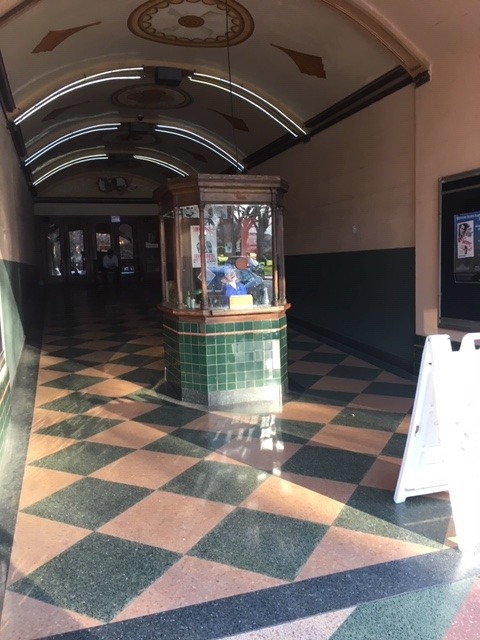
Members of the Sonoma League for Historic Preservation gathered at the Sebastiani Theatre on March 12 for a special 'insiders tour' of the historic movie temple.
Theater manager Roger Rhoten spoke to those gathered before providing the tour. He pointed out that the Sebastiani Theatre is now in its eighties and at that age it is doing alright. It has a good sound system and currently has the ability to show 35 mm, 9 mm and digital formatted films. But for the near future and beyond, the Sebastiani Theatre will need help.
"There is so much that needs to done to help preserve and upgrade this gem of a movie theater," he said. For one thing, as those gathered agreed, there are the seats. Comfortable seating is a must. "We want to keep the historical integrity of this theatre, said Rohten, so they will be as close to the original seating as possible."
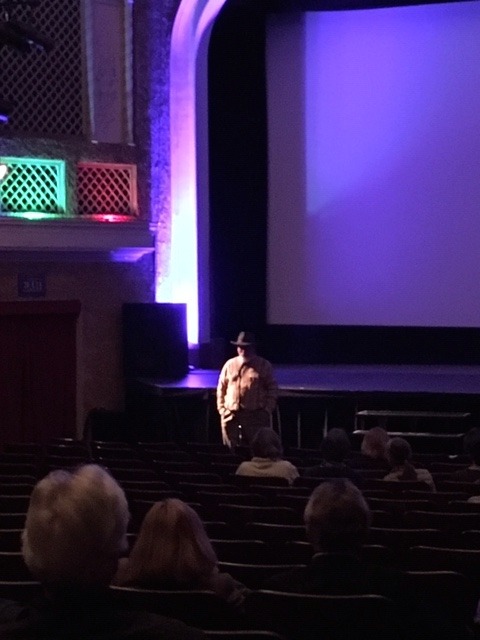
Some in the crowd that Tuesday night asked if the seats in the future might have cup holders. "Well, okay, said Rhoten as the audience began to chuckle, but I will insist they be made of real wood, and not plastic."
He also wanted to impress upon them that the Sebastiani is among the last of its kind. "There are few if no more single-full screen movie theaters like this left," said Rhoten. "What we have here is unique in so many ways!"
Samuele Sebastiani the founder and first patriarch of Sebastiani Vineyards and Winery spared no expense to build his town a movie theatre. "And, that wasn't easy, added Rhoten, because it was in the midst of The Great Depression."
Using quality materials like rich oak wood for the doors and paneling and finely quarried marble the theatre was designed by well-known theater architect James W. Reid.
Rhoten mentioned that "the very first movie shown here, screened on April 7, 1934, and was called "Fugitive Lovers" starring Robert Montgomery. Admission price was 30¢."
"All the great movies were shown here upon initial release, ones we all know like, "Gone With The Wind," "Ben Hur," etc.
But as time passed and movie trends and tastes changed, the Sebastiani Theatre barely survived some lackluster years.
"I remember when there were bats up in the rafters, the seats were dilapidated and the air was musty," said Sonoma resident Kathy Ostram. That definitely was more than 30 years ago.
Even when the theatre was at its lowest point, it has always been a landmark, functioning as a movie theater.
Yet, Rhoten pointed out even with some of the most famous of movies, the longest running movie to show at The Sebastiani Theatre ever in all its history so far, was "My Big Fat Greek Wedding."
Since becoming managers of Sebastiani Theatre in 1991, Rhoten and his wife Diana have shown mostly independent and film festival type films over first-run big budget movies.
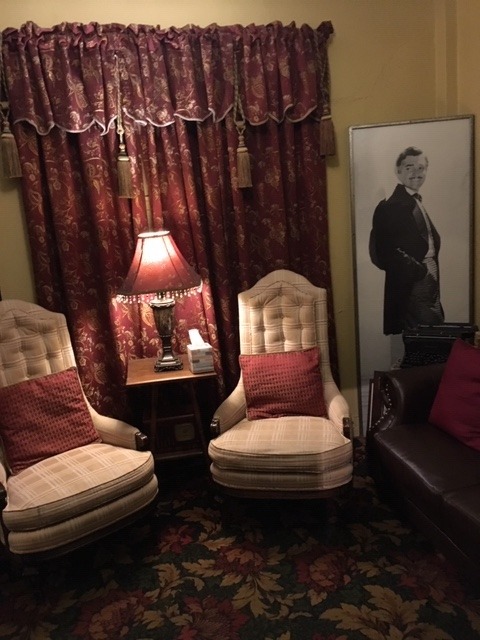
Rhoten explained the Sebastiani Theater's current dilemma."The film distribution system favors the owners of multi-screen theaters. They can show more films and have the flexibility to move lesser grossing films to smaller screening rooms. Single screen movie theaters like the Sebastiani, he said have to agree to show first-run films for a longer run than is profitable.”
One vision that Rhoten has for the future is to build a screening room upstairs to accommodate the contract obligations of first-run films. He also noted that with current ADA regulations, there is much work to be done to bring the theatre up to code and make it more accessible in all aspects to everyone.
He also explained that since 1986 the Sebastiani Theatre was sold to an Oakland-based investor. The Sonoma City Council leases the Theatre from the investor and splits the cost with the Rhoten family.
With the increasing popularity of the annual Sonoma International Film Festival, Rhoten would like to see more events held at The Sebastiani Theatre. Live concerts, plays and special events, he hopes the Sebastiani Theatre of the near future will be a mecca for as well as a rallying place for the community at large.
In 2008 the nonprofit Sebastiani Theatre Foundation was formed to raise money to contribute to the Theatre's operating expenses and improvements to the facility. As a result the Theatre now has a state-of-the-art digital projector and sound system.
This year the for-profit Theatre and the nonprofit Foundation will merge and the Sebastiani Theatre will become a 501(c)3 charitable institution.
Rhoten is hoping that groups like The Sonoma League for Historic Preservation and many others will help in the endeavor.
Since it is the League's mission to protect and share Sonoma's unique cultural heritage, it’s only natural that a historic building like the Sebastiani Theatre would be saved for the enjoyment and benefit of the Sonoma Valley community. And, that includes visitors from around the world, especially at film festival time.
The League’s executive director Chuck Bingaman noted later that it was an evening well-spent and enjoyed by all.
Rhoten hopes the entire community of Sonoma will help raise the needed funds and said that while over the next two years, plans are being finalized, he is eager to hear more ideas. To learn more about The Sebastiani Theatre visit its web site.
Article and photos by Jonathan Farrell, contributor to The Sonoma Valley Sun

#Sonoma#california#sebastiani#sebastiani theatre#film festival#Sonomawood#Roger Rhoten#Sonoma League for Historic Preservation#wine country
0 notes
Photo

The Sebastiani Theatre - a 75 year old historic theater in the city of Sonoma.⠀ 📷: @mbstings⠀ ⠀ www.travelhwy101.com ⠀ ⠀ #travelhwy101 #hwy101 #sebasitani #sebastianitheatre #sonomacity #sonoma #downtown #historicsonoma #california101 #travelmore #roadtrip #getoutside #theaterlife #californialiving #escapetocalifornia (at Sebastiani Theatre Foundation)
#sebasitani#sebastianitheatre#sonoma#roadtrip#getoutside#historicsonoma#escapetocalifornia#california101#travelmore#hwy101#travelhwy101#californialiving#theaterlife#sonomacity#downtown
0 notes
Photo
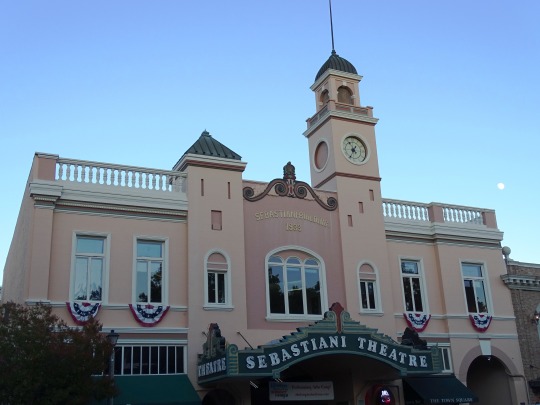
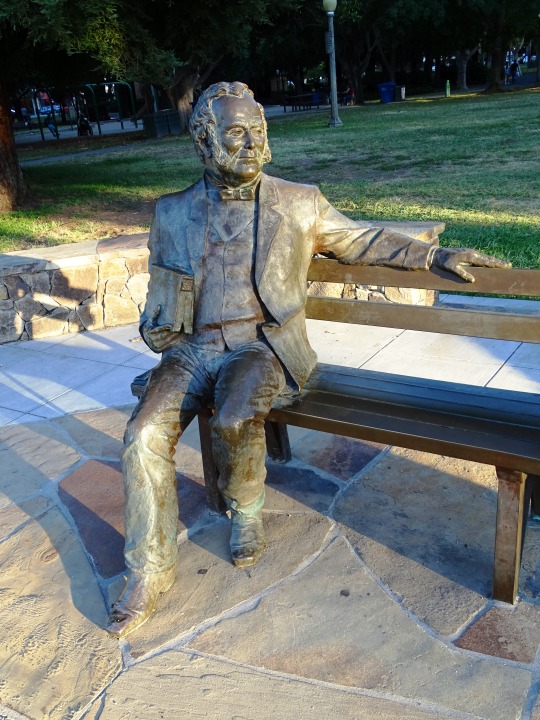
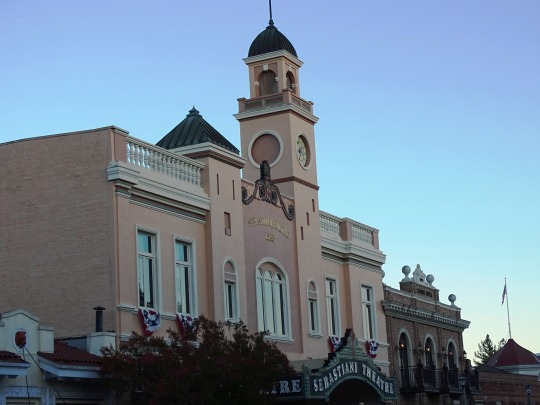
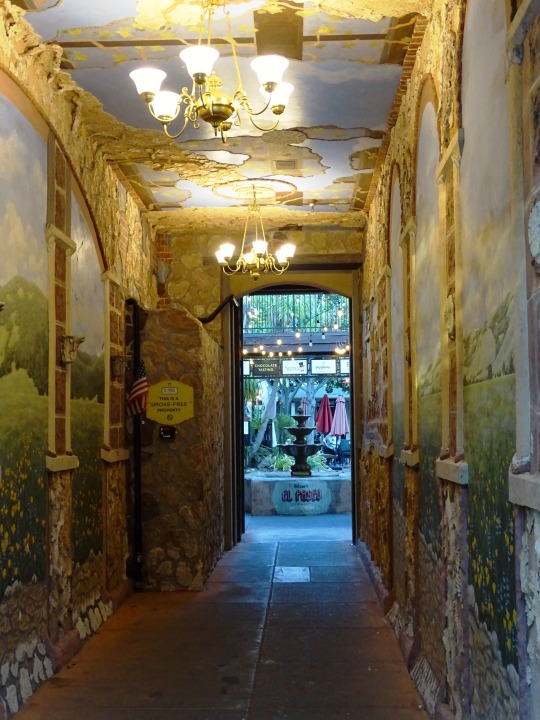
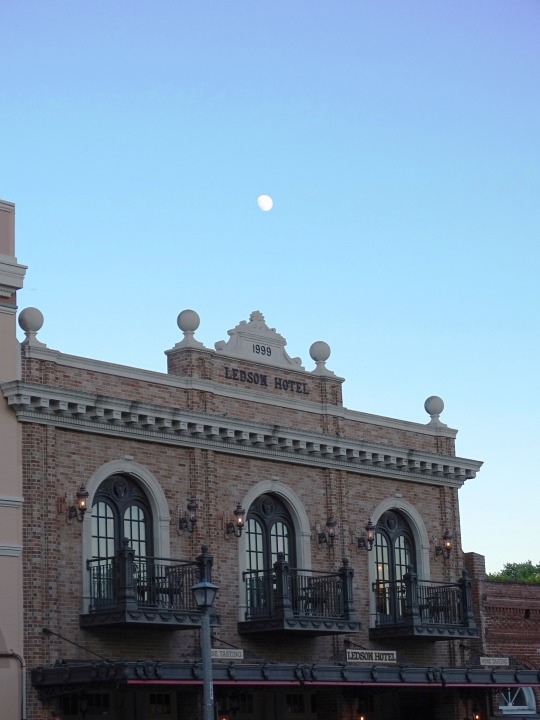
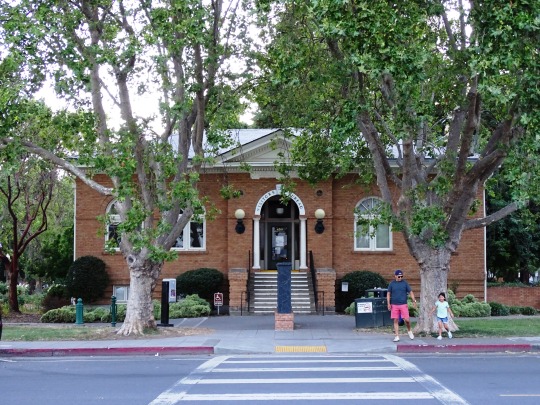
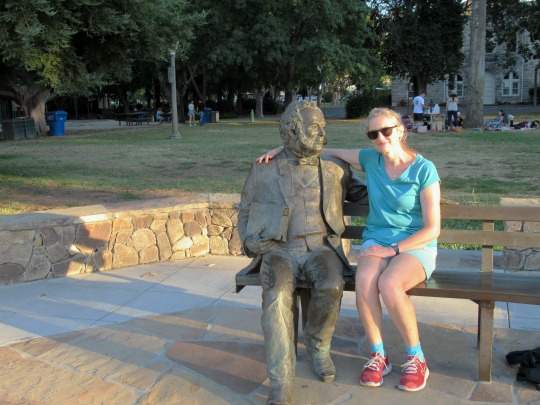
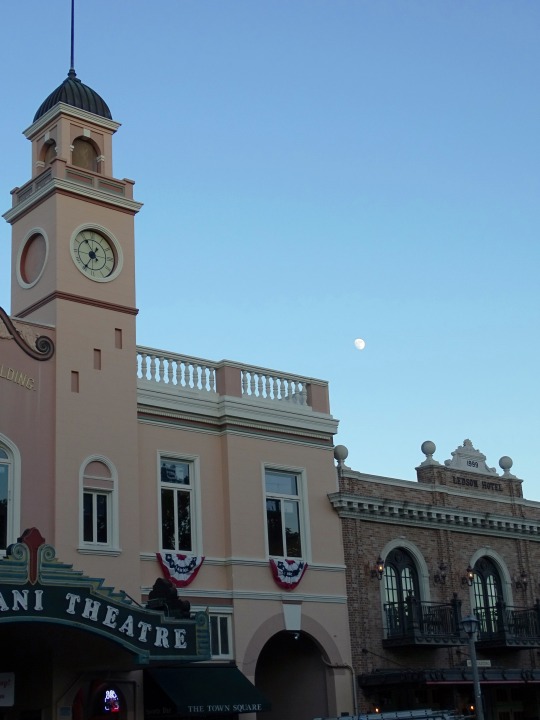
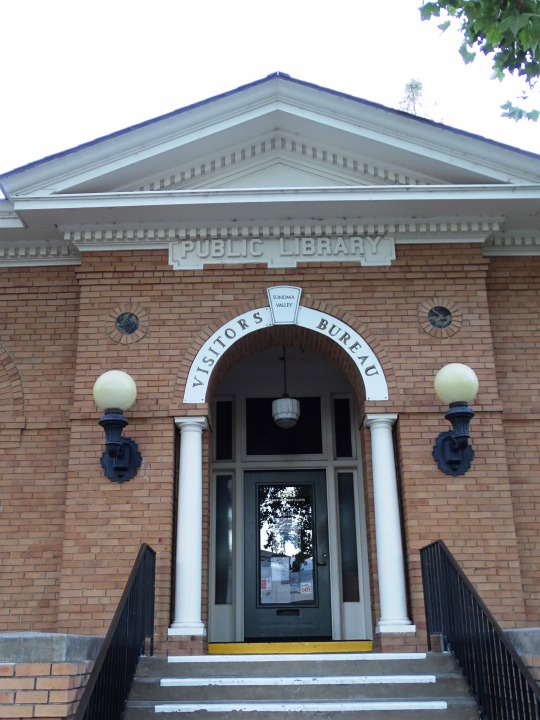

Sonoma, CA (No. 1)
Sonoma is a city in Sonoma County, California, located in the North Bay region of the San Francisco Bay Area. Sonoma is one of the principal cities of California's Wine Country and the center of the Sonoma Valley AVA. Sonoma's population was 10,739 as of the 2020 census, while the Sonoma urban area had a population of 32,678. Sonoma is a popular tourist destination, owing to its Californian wineries, noted events like the Sonoma International Film Festival, and its historic center.
Sonoma's origins date to 1823, when José Altimira established Mission San Francisco Solano, under the direction of Governor Luis Antonio Argüello. Following the Mexican secularization of the missions, famed Californio statesman Mariano G. Vallejo founded Sonoma on the former mission's lands in 1835. Sonoma served as the base of General Vallejo's operations until the Bear Flag Revolt in 1846, when American filibusters overthrew the local Mexican government and declared the California Republic, ushering in the American Conquest of California.
Source: Wikipedia
#General Mariano Guadalupe Vallejo by Jim Callahan#Sonoma#California#evening light#public art#architecture#tourist attraction#landmark#USA#Sebastiani Theatre#old public library#moon#Ledson Hotel#blue hour#dusk#original photography#downtown#West Coast#summer 2022#vacation#travel#Sonoma Plaza
4 notes
·
View notes
Text
REVIEW: The Hunchback of Notre Dame" at the Mac-Haydn Theatre
REVIEW: The Hunchback of Notre Dame” at the Mac-Haydn Theatre

View On WordPress
#Alan Menken#Alison Zador#Andrew Gmoser#Chatham NY#David Maglione#Disney#Gabe Belyeu#James Benjamin Rodgers#Jillian Zack#John Saunders#Laura Helm#Lisa Jarisch#Mac-Haydn#Mac-Haydn Theatre#MHT#Michael Brennan#Quinto Ott#Sebastiani Romagnolo#Stephen Schwartz#The Hunchback of Notre Dame#The Mac-Haydn#The Mac-Haydn Theatre#Victor Hugo
0 notes
Photo

The wonderful historic Sebastiani Theater in old town Sonoma #sonoma #sebastianitheatre #vintagetheater #neonsign #vintagemovietheater (at Sebastiani Theatre Foundation)
0 notes
Photo

From Premiere to Premiere with Vanessa Robledo 2004 Impacto Latino Magazine - 2019 Harvest Season Documentary Film Please join us Sunday April 7th at 4:45 pm for the screening of Harvest Season at the Sebastiani Theatre https://www.facebook.com/events/756053348128545/ #HarvestSeason #SebastianiTheatre #Documentary #Film #Friendship #Community #VineyardWorkers #WineMakers #Latinos #ImpactoLatino #ValleyOfTheMoon #NapaValley #SonomaValley #Sonoma #Napa #SonomaValleyLife #WineCountry #LifeStyle #YouBelongHere #California #Travel #ItsABeautifulLife #ThankYou #Joy (at Sebastiani Theatre Foundation) https://www.instagram.com/p/BvzQZYNn_ct/?utm_source=ig_tumblr_share&igshid=1qiplpa18qljx
#harvestseason#sebastianitheatre#documentary#film#friendship#community#vineyardworkers#winemakers#latinos#impactolatino#valleyofthemoon#napavalley#sonomavalley#sonoma#napa#sonomavalleylife#winecountry#lifestyle#youbelonghere#california#travel#itsabeautifullife#thankyou#joy
0 notes